Secretary of War George W. McCrary forwards and endorses a letter from the General of the Army in response to a request to grant Richard Henry Pratt the authority to remain at the Hampton Institute for three months. The note states that Pratt is supposed to be a cavalry officer in Texas, where he is needed, but has been absent for four or five…
1879
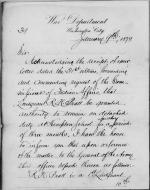
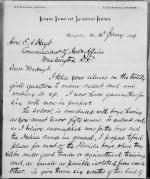
Richard H. Pratt states that he currently has 57 male students at Hampton and is looking to recruit 20 female students. He goes on to say that he plans to send most of the former Ft. Marion prisoners currently enrolled at Hamtpon on outings, believing that placing Indian students in white families where they will learn a trade will help give…
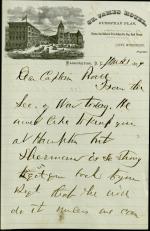
Samuel Chapman Armstrong of the Hampton Institute writes to Richard Henry Pratt informing him that the Secretary of War wishes to keep Pratt at Hampton, while General Sherman wishes to have him transferred back to regular army service. Armstrong discusses the possibility of the Army Bill being used to create an office of Indian education in the…
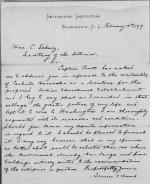
Spencer Fullteron Baird, Secretary of the Smithsonian Institution, writes to Secretary of the Interior Carl Schurz to endorse Captain Richard H. Pratt's request to establish an Indian School at the Carlisle Barracks. Baird contends that there is "no better spot" to open an Indian School because the buildings at the barracks would be well-suited…
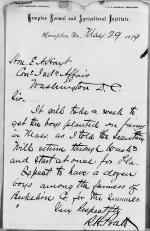
Richard H. Pratt informs Commissioner of Indian Affairs E. A. Hayt that it will take a week to place the male students from Hampton on farms in Massachusetts and then he will travel to Florida. Pratt expects to place a dozen male students on farms in Berkshire County as well.
Note: This item was copied from U.S. National Archives…
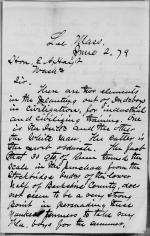
Richard H. Pratt informs Commissioner of Indian Affairs E. A. Hayt that there are problems "persuading these Yankee farmers" in Massachusetts to be outing hosts for Hampton students. While seven farmers are interested in hosting a student, Pratt would like fifteen more.
Note: This item was copied from U.S. National Archives microfilm…
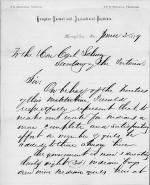
Hampton Institute Principal Samuel C. Armstrong states that they are currently educating 38 Indian boys and only 9 Indian girls, so he requests that they recruit 20 Dakota female Indian students. He requests that, if his wish is granted, Captain Richard H. Pratt be sent to secure the students and that he be allowed to bring back no more than…
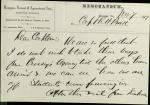
Samuel Chapman Armstrong of the Hampton Institute writes Richard Henry Pratt a memo stating that he cannot take some of the male students Pratt is recruiting at the moment due to capacity concerns.
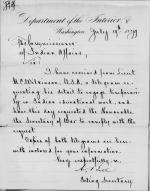
Lieutenant Melville C. Wilkinson requests to temporarily engage in "Indian educational work" in Oregon, and Acting Secretary of the Interior A. Bell forwards and endorses Wilkinson's request to the Commissioner of Indian Affairs and the Secretary of War. In his telegraph to the Secretary of War, Bell states that Wilkinson's work will be similar…
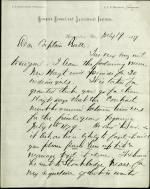
Samuel Chapman Armstrong of the Hampton Institute writes to Richard Henry Pratt informing him that Commissioner of Indian Affairs Hayt has promised a contract to recruit 20 Indian girls for the Hampton Institute. Armstrong discusses a desire to push Hayt for a larger contract for a higher recruitment number, and discusses logistics for Pratt's…
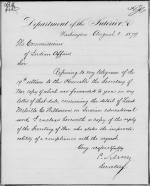
Secretary of War George W. McCrary informs Assistant Secretary of the Interior A. Bell that he does not have authority to allow Lieutenant Melville C. Wilkinson to engage in Indian education as Richard Henry Pratt is already in that line of work. Instead, Wilkinson will be sent to a college in Oregon where certain Indian youth can be sent.…
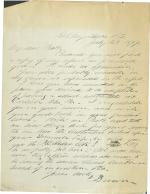
Brown writes to Richard Henry Pratt sending a report and congratulating him on getting permission to establish the Carlisle Indian Industrial School.
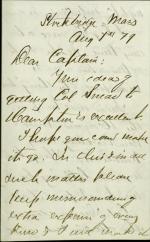
Samuel Chapman Armstrong of the Hampton Institute writes to Richard Henry Pratt discussing numerous topics include the per-capita rate for Indian students, a potential visit by Col. Snead, a competitive funding issue between Hampton and Howard University, and student progress.
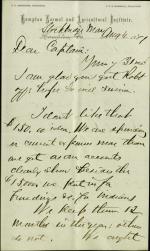
Samuel Chapman Armstrong of the Hampton Institute writes to Richard Henry Pratt discussing concerns over a proposal for too low of a per capita rate for Indian students.
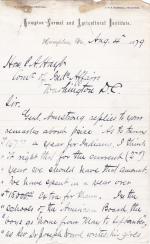
Letter from Richard Henry Pratt to Commissioner of Indian Affairs Ezra A. Hayt suggesting an increase in the per-student funding afforded by the government to Indian schools. Pratt also encourages the Commissioner to continue pursuing Congressional approval for the opening of an Indian school at the Carlisle Barracks.
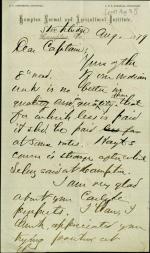
Samuel Chapman Armstrong of the Hampton Institute writes to Richard Henry Pratt about Pratt's attempts to establish a school at Carlisle. Armstrong notes that Commissioner of Indian Affairs Hayt seems less inclined to support their work. Armstrong also notes that he is glad to hear of Pratt's prospects with Carlisle, that he recognizes the "…
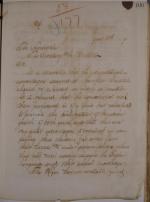
A letter wherein Commissioner of Indian Affairs Ezra A. Hayt writes to Secretary of the Interior Carl Schurz to recommend expanding the kind of educational program pursued at Hampton for "the civilization of Indian youth of both sexes… far away from their homes". Hayt requests that the Secretary of War approve the use of Carlisle Barracks in…
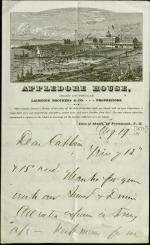
Samuel Chapman Armstrong of the Hampton Institute writes to Richard Henry Pratt discussing public sentiments towards Indian education, arguing that Pratt's upcoming school at Carlisle will help shift public views.
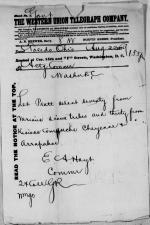
Commissioner of Indian Affairs E. A. Hayt instructs the Acting Commissioner to allow Richard Henry Pratt to select 70 students from Sioux Nations and 30 from the Kiowa, Comanche, Cheyenne, and Arapaho Nations.
Note: This item was copied from U.S. National Archives microfilm reels (M234), which were filmed from the original documents…
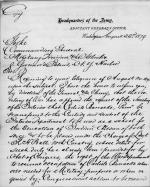
Adjutant General E. D. Townsend states that the Secretary of War has approved the Secretary of the Interior's request to transfer the Carlisle Barracks from the War Department to the Interior. The Barracks will be used as a school for Indian children and will be under the charge of Richard Henry Pratt. The War Department retains the right to…
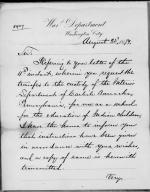
Secretary of War George W. McCrary informs the Secretary of the Interior that he has issued orders to transfer the Carlisle Barracks to the Interior Department to use as an Indian school.
Note: This item was copied from U.S. National Archives microfilm reels (M234), which were filmed from the original documents found in Record Group 75,…
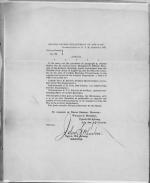
The Chief Clerk for the Secretary of War forwards a series of documents to the Secretary of the Interior regarding the transfer of the Carlisle Barracks from the War Department to the Interior Department. First, Adjutant General E. D. Townsend issues Special Orders No. 194 stating that Richard Henry Pratt now officially works in Indian…
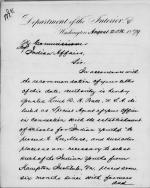
Acting Secretary of the Interior A. Bell informs the Commissioner of Indian Affairs that he is giving permission to Lieutenant Richard Henry Pratt to proceed to Lee, Massachusetts. Bell notes that Pratt will secure current Hampton Institute students who are on outing and take them to the Carlisle Barracks. These Hampton students will become…
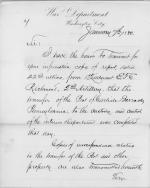
Secretary of War Alex Ramsey transmits to Secretary of the Interior Carl Schurz a report from Lieutenant E. T. C. Richmond indicating that the transfer of the Carlisle Barracks from the War Department to the Interior was completed on January 6, 1880 and correspondence regarding said transfer. Also attached is an official order from Major…
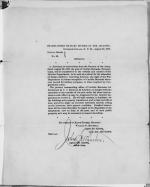
Captain William G. Mitchell issues Special Orders No. 52 ordering the transfer of the Carlisle Barracks from the War Department to the Interior Department, with the Barracks' commanding officer Lieutenant E. T. C. Richmond overseeing the transfer and taking inventory of the value of the transferred goods and buildings. Major General Winfield S…
